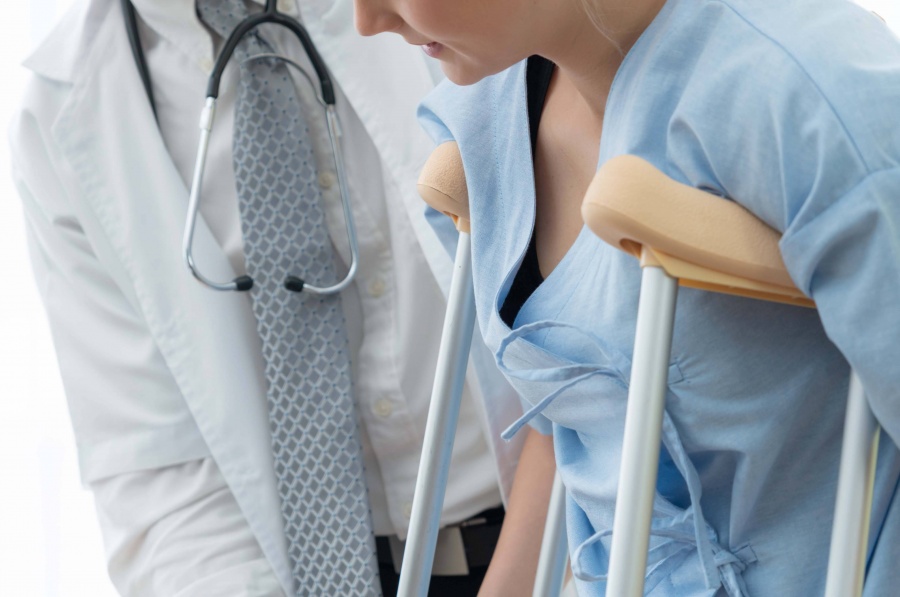
On April 21st, the General Office of the National Health Commission released a notice titled "Regarding Further Advancing and Accelerating the Work Related to Rehabilitation Surgery." The notice calls for further progress and acceleration of work related to rehabilitation surgery.

Rehabilitation surgery is one of the directions in the current development of surgery and is a comprehensive project involving multiple disciplines, multiple departments, and the synergy of multiple treatment methods. Its main goal is to reduce the physical and psychological trauma and stress experienced by surgical patients to achieve faster recovery.
In November 2019, the National Health Commission issued a notice regarding the implementation of pilot projects for accelerated rehabilitation surgery, with plans to conduct these pilot projects nationwide from 2019 to 2020. Three years later, these pilot projects will be expanded nationwide.
According to the interpretation provided by the National Health Commission, the core idea of accelerated rehabilitation surgery is to reduce postoperative complications and stress reactions, shorten hospitalization time, lower surgical risks, and promote postoperative recovery through the optimization of medical service processes and perioperative medical measures. It employs a systematic diagnostic and treatment model to support this concept. The concept and model of accelerated rehabilitation surgery help improve medical service efficiency and resource utilization, and they are essential for advancing hospital fine management and high-quality medical service development.
This notice is divided into four main parts. Firstly, it calls for enhanced medical service capabilities and improved overall medical service quality through the development of relevant departments and increased understanding of the concept and model of accelerated rehabilitation surgery. Secondly, the notice emphasizes the need for establishing and improving work systems to facilitate the implementation of the accelerated rehabilitation surgery diagnostic and treatment model. It encourages medical institutions to establish effective management mechanisms, formulate comprehensive work systems and diagnostic and treatment plans, and promote the development of multidisciplinary diagnostic and treatment models, thus optimizing the medical service process. Thirdly, it underscores the importance of strengthening management at critical stages to improve the quality of diagnostic and treatment processes and medical service efficiency. Finally, the notice focuses on creating an optimized policy environment to ensure the smooth implementation of relevant work, including refining evaluation criteria and mechanisms, establishing incentive mechanisms, and enhancing promotional efforts.
In summary, this notice aims to promote the development of accelerated rehabilitation surgery-related work, including the establishment of departments and the allocation of medical equipment.

The first part of the "Notice" emphasizes the strengthening of the construction of relevant departments. Medical institutions are required to strengthen the construction of surgical departments, including improving the equipment and facilities of relevant departments and building the talent pool. In addition, they are required to enhance the promotion and training of relevant clinical guidelines and technical operation standards to improve clinical diagnostic and treatment capabilities.
At the same time, it is necessary to strengthen the construction of departments such as mental (psychological) health, anesthesia, operating rooms, pharmacy, rehabilitation medicine, medical imaging, clinical laboratory, pathology, blood transfusion, clinical nutrition, and others. These departments will comprehensively enhance the medical service capabilities based on the diagnostic and treatment needs of surgical patients.
In summary, by improving the diagnostic and treatment models and optimizing service processes, medical institutions will better adapt to the accelerated rehabilitation surgery model and provide more efficient medical services.

The second part of the document focuses on diagnostic and treatment models. It emphasizes a patient-centered approach and strengthens the role of primary care physicians and multidisciplinary collaboration in medical services. The document encourages the establishment of multidisciplinary outpatient clinics for relevant disease types, the creation of a multidisciplinary joint diagnosis and treatment system, and the exploration of specialized clinical diagnostic and treatment centers.
Based on the specific diagnostic and treatment needs, the document suggests that, under the leadership of the surgical department, multiple departments, including anesthesia, operating rooms, pharmacy, rehabilitation medicine, medical imaging, clinical laboratory, pathology, blood transfusion, clinical nutrition, and others, should work together to research and establish preoperative preparation plans, surgical timing, and procedures. This includes enhancing medication guidance, early rehabilitation intervention, ensuring blood transfusion safety, and providing nutritional support.
Medical institutions are expected to allocate medical resources rationally around the diagnostic and treatment needs of patients. The goal is to improve medical service efficiency and enhance the patient's healthcare experience by reengineering the medical service process. This may involve promoting the implementation of appointment-based diagnosis and treatment, telemedicine, clinical pathway management, mutual recognition of test results, medical social work, volunteer services, day care medical services, and high-quality nursing services. The document suggests the exploration of a scientific process for patient reception, treatment, referral, and management to construct an efficient medical service system that covers diagnosis, treatment, management, and rehabilitation.
Given the increasing demand for rehabilitation related to patient diagnosis and treatment, the potential for the accelerated rehabilitation surgery market is substantial. For 17 years, DaWei Medical has been dedicated to the field of ultrasound, focusing on specialized applications and continually developing more comprehensive and professional ultrasound products. These products fully meet the requirements of accelerated rehabilitation surgery and support the allocation of equipment conditions in relevant departments, helping to enhance diagnostic and treatment models and optimize service processes. Their new fully touch-screen musculoskeletal ultrasound device has become the "third eye" for anesthesiologists, pain management specialists, and rehabilitation doctors.
